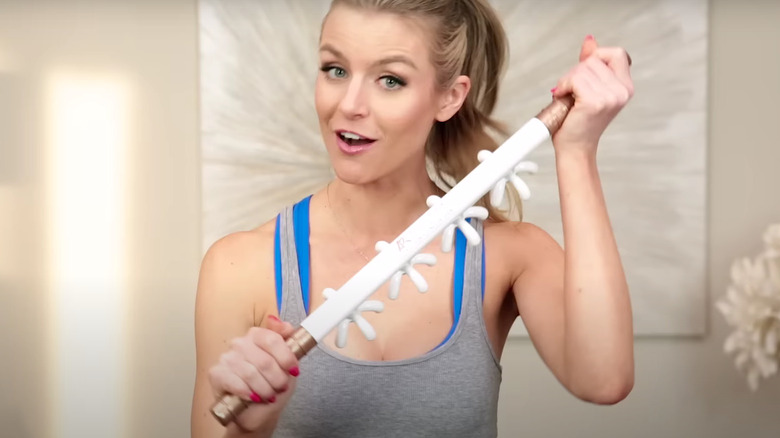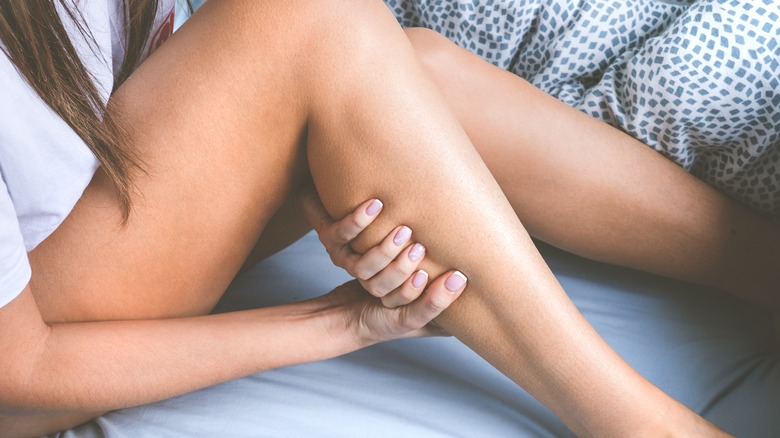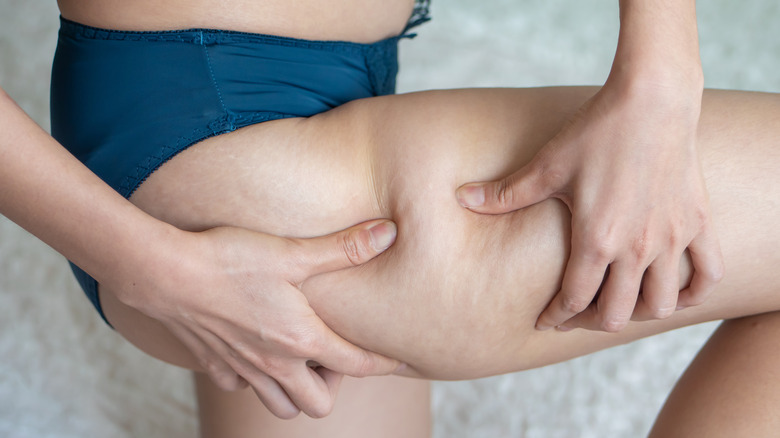Fascia Blasting Is Another Overhyped Cellulite Treatment That Doesn't Deserve Our Attention - Here's Why
Cellulite is normal, and it affects almost 100% of adult women. While many individuals are happy with how it looks on their skin, some want to minimize its appearance. As a result, some women turn to laser treatments or, in extreme cases, even surgery, both of which can be extremely pricey depending on your budget. There is also the recovery period that we often associate with surgery. Due to these factors, many women often look for alternative, pain-free solutions to ease their cellulite woes.
One alternative, known as fascia blasting, has made waves in recent years. It's even won an honorable mention from Kourtney Kardashian's brand, Poosh. However, this doesn't necessarily mean that it's the best solution. While on the outside, it appears to be a quick and easy method to help fix your cellulite, it turns out that this treatment isn't what it's hyped up to be. While you may see results, they may not be exactly what you expect. So what's the big secret? Below, we'll take a dive into why you don't need to use fascia blasting and why you should probably avoid it.
Fascia blasting can be painful
One good reason to avoid fascia blasting is that it can be painful. Board-certified dermatologist Gary Goldenberg explained how it works to Women's Health: "The device has to penetrate the skin — without breaking it — to get to the connective tissue in the fatty layer of the skin. Applying pressure and massage can cause blood vessels and capillaries to rupture, causing bruising."
Understandably, this is something that you probably don't want to deal with. While there's no guarantee that you will encounter this effect yourself, the risk is still there, and plenty of women experience it. If you're someone who doesn't deal well with pain, it's probably best to avoid the treatment. Instead, focus on keeping your leg muscles in good health. Reverse running is an excellent way to avoid workout injuries, but it may not necessarily work in this case.
In addition, some individuals may consider the price of the fascia device to be on the more expensive side, with prices starting at $99. However, the cost for other kits and tools skyrockets far beyond this base price. For some, this can be off-putting. All of these factors, combined with a lack of supporting studies, don't help to build a strong case for personal usage of the device. While both potentially painful and expensive, the downsides of the treatment don't end there. So what else is lurking behind the fascia curtain?
Your cellulite will probably come back
While it may come as a surprise, it turns out that fascia blasting may be a complete waste of time. Speaking to Real Simple, board-certified plastic surgeon Jeffrey G. Lind reinforces this idea: "If any improvement is seen, it is likely only temporary and as a result of increased lymphatic drainage or temporary stretching of the fibrous [tissue] that surround the pockets of fat that cause the appearance of cellulite," he says. "Any results seen would be temporary and extremely short-lived." Unfortunately, this means that your cellulite would likely return after using the device, and keeping it at bay may be challenging. So if you were hoping to find a permanent solution, this may not be the correct treatment for you.
Although there are alternatives, the same principle applies. For example, laser treatments only address the problem for around half a year, per the American Academy of Dermatology Association. That's not a viable long-term solution for many.
Nothing is really going to permanently get rid of your cellulite for good. Of course, the ultimate decision is up to you, but you can rest easy knowing that there's nothing wrong with having cellulite — it's a perfectly natural process that happens to almost everyone. Instead, learning to embrace your natural body should help you feel more confident and comfortable within your own skin. In fact, doing so may even encourage others around you to feel comfortable about their own cellulite.


